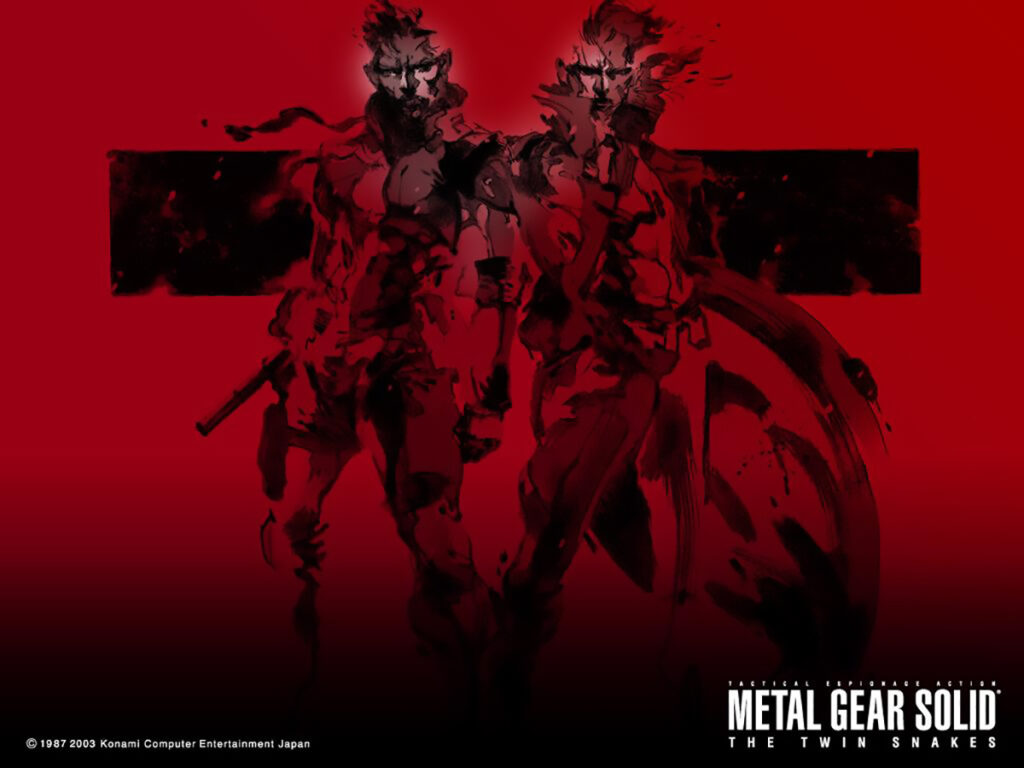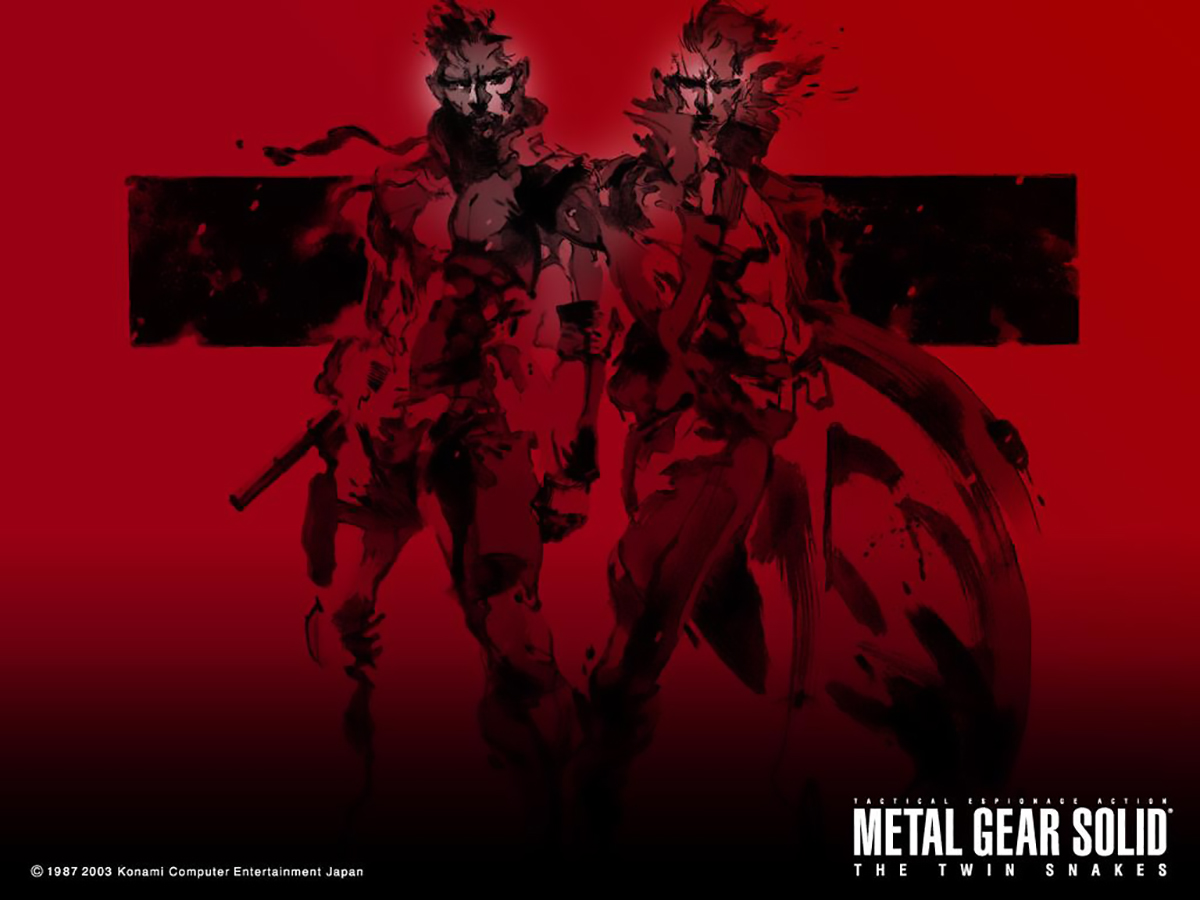
Metal Gear Solid: A Legacy of Stealth, Intrigue, and Tactical Espionage Action
The Metal Gear Solid franchise, a cornerstone of the stealth action genre, has captivated gamers for decades with its intricate storylines, compelling characters, and innovative gameplay mechanics. From its humble beginnings on the MSX2 to its groundbreaking transition to 3D on the PlayStation, Metal Gear Solid has consistently pushed the boundaries of interactive entertainment, leaving an indelible mark on the video game landscape. This article delves into the history, evolution, and enduring appeal of this iconic series.
The Genesis of Stealth: Metal Gear on MSX2
Hideo Kojima’s vision for stealth action began with the original Metal Gear, released in 1987 for the MSX2 home computer. Limited by the hardware capabilities of the time, Kojima ingeniously shifted the focus from direct combat to evasion and strategic infiltration. Players controlled Solid Snake, tasked with infiltrating the fortress of Outer Heaven to destroy the nuclear-equipped walking tank, Metal Gear. The game emphasized avoiding enemy patrols, utilizing cover, and employing a variety of gadgets to accomplish the mission. While simplistic by modern standards, the original Metal Gear laid the foundation for the stealth genre and introduced many of the themes and concepts that would become hallmarks of the series.
The PlayStation Revolution: Metal Gear Solid
In 1998, Metal Gear Solid redefined the stealth action genre with its arrival on the PlayStation. The transition to 3D graphics allowed for a more immersive and cinematic experience, bringing Snake’s world to life in stunning detail. The gameplay was refined, incorporating new mechanics such as crawling, wall-hugging, and first-person aiming. The narrative was equally ambitious, exploring complex themes of genetic engineering, nuclear proliferation, and the psychological toll of warfare. Memorable characters like Liquid Snake, Revolver Ocelot, and Psycho Mantis added depth and intrigue to the story, creating a truly unforgettable gaming experience. The innovative boss battles, particularly the encounter with Psycho Mantis, which broke the fourth wall by reading the player’s memory card, cemented Metal Gear Solid’s status as a masterpiece. The success of Metal Gear Solid was undeniable, selling millions of copies worldwide and establishing the franchise as a major force in the gaming industry. [See also: The Evolution of Stealth Mechanics in Gaming]
Expanding the Universe: Metal Gear Solid 2: Sons of Liberty and Metal Gear Solid 3: Snake Eater
Following the success of the original, Metal Gear Solid 2: Sons of Liberty arrived on the PlayStation 2 in 2001. While the gameplay was further refined, introducing new maneuvers and environmental interactions, the narrative took a more experimental and controversial turn. Players initially controlled Raiden, a new protagonist, leading to mixed reactions from fans who were expecting to play as Solid Snake throughout the entire game. The story delved into themes of memes, control, and the nature of reality, leaving many players perplexed and prompting extensive discussion and analysis. Despite the controversy, Metal Gear Solid 2 was praised for its innovative gameplay and thought-provoking narrative. Metal Gear Solid 3: Snake Eater, released in 2004, served as a prequel to the series, taking players back to the Cold War era and focusing on Naked Snake, the future Big Boss. The game introduced a new survival system, requiring players to hunt for food, treat injuries, and camouflage themselves to blend in with the environment. The story explored themes of loyalty, betrayal, and the origins of the Patriots, further enriching the Metal Gear Solid lore. The boss battles in Metal Gear Solid 3 were particularly memorable, culminating in an emotionally charged final encounter with The Boss, Naked Snake’s mentor. [See also: The Most Memorable Boss Battles in Metal Gear Solid]
The Legacy Continues: Metal Gear Solid 4: Guns of the Patriots and Metal Gear Solid V: The Phantom Pain
Metal Gear Solid 4: Guns of the Patriots, released on the PlayStation 3 in 2008, brought the saga of Solid Snake to a close. Set in a near-future world ravaged by war, the game saw an aging Snake battling against Liquid Ocelot and the Patriots’ control over the global economy. The gameplay was streamlined and refined, incorporating new features such as the OctoCamo suit, which allowed Snake to blend in with his surroundings. The story was filled with fan service, tying up loose ends from previous games and providing closure for many of the series’ beloved characters. While some criticized the game’s lengthy cutscenes, Metal Gear Solid 4 was widely praised for its emotional narrative and satisfying conclusion to Snake’s story. Metal Gear Solid V: The Phantom Pain, released in 2015, represented a significant departure for the series, introducing an open-world environment and a more customizable gameplay experience. Players controlled Venom Snake, Big Boss’s phantom, as he sought revenge against those who destroyed his former organization, Militaires Sans Frontières. The game’s story was darker and more ambiguous than previous installments, exploring themes of revenge, identity, and the consequences of war. While the story felt incomplete to some, the gameplay of Metal Gear Solid V was widely praised for its depth and replayability. The development and release of Metal Gear Solid V were marred by controversy, as Hideo Kojima’s relationship with Konami deteriorated, leading to his eventual departure from the company. [See also: The Impact of Hideo Kojima on the Video Game Industry]
Beyond the Main Series: Spin-offs and Sequels
In addition to the main series, the Metal Gear Solid universe has expanded to include a variety of spin-offs and sequels. Metal Gear Solid: Portable Ops and Metal Gear Solid: Peace Walker explored the early years of Big Boss and his efforts to build Militaires Sans Frontières. Metal Gear Rising: Revengeance, developed by PlatinumGames, took the series in a new direction, focusing on high-action combat and featuring Raiden as the protagonist. Metal Gear Survive, released after Kojima’s departure from Konami, was a survival-action game set in an alternate timeline, but it was largely criticized by fans for its lack of connection to the main series and its reliance on microtransactions. The future of the Metal Gear Solid franchise remains uncertain, but the legacy of the series continues to inspire and influence game developers and players alike.
The Enduring Appeal of Metal Gear Solid
The Metal Gear Solid franchise has endured for over three decades due to its unique blend of stealth action gameplay, compelling storytelling, and memorable characters. The series has consistently pushed the boundaries of interactive entertainment, exploring complex themes and challenging players to think critically about the world around them. The innovative gameplay mechanics, such as the emphasis on stealth and the use of gadgets, have influenced countless other games. The memorable characters, such as Solid Snake, Liquid Snake, and Big Boss, have become iconic figures in gaming culture. The complex and thought-provoking narratives have sparked countless discussions and analyses. Whether you’re a longtime fan or a newcomer to the series, Metal Gear Solid offers a rich and rewarding gaming experience that is sure to leave a lasting impression. The impact of Metal Gear Solid on the gaming industry is undeniable, solidifying its place as one of the most influential and beloved franchises of all time. From its humble beginnings on the MSX2 to its groundbreaking transition to 3D on the PlayStation, Metal Gear Solid has consistently raised the bar for stealth action games and continues to inspire and influence game developers and players alike. The legacy of Metal Gear Solid will undoubtedly continue to endure for many years to come, ensuring that the name Solid Snake and the world of tactical espionage action will forever be etched in the annals of gaming history. The innovative gameplay and deep narratives of the Metal Gear Solid series have earned it a place among the greatest video game franchises ever created. The series’ impact on the stealth genre is undeniable, and its influence can be seen in countless games that have followed. The characters of Metal Gear Solid are some of the most memorable and well-developed in gaming, and their stories have resonated with players around the world. The themes explored in Metal Gear Solid, such as war, peace, and the nature of humanity, are timeless and continue to be relevant today. The Metal Gear Solid franchise is a true masterpiece of interactive entertainment, and its legacy will continue to inspire and entertain gamers for generations to come. The meticulous attention to detail and the innovative gameplay mechanics that define the Metal Gear Solid series have set a new standard for stealth action games. The intricate storylines and complex characters that populate the Metal Gear Solid universe have captivated audiences for decades, making it one of the most beloved and influential franchises in gaming history.

